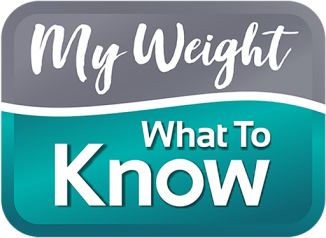By Kim DeMattia
Many of us are all too familiar with this pattern: we commit to a diet (sure that THIS time, it’s going to be different!), we work hard & lose weight, only to eventually gain the weight back, feel defeated and repeat the process. Each time this happens, we feel more like a failure and are sure that if we just had more willpower, we could be successful. It’s time for a new approach…
In a recent interview with weight management expert, Dr. Sandy Van explained why this cycle happens: diets don’t work. To be successful with long-term weight loss, we need to change behaviors for the long-run and recognize that help from a medical professional may be necessary. Dr. Van is the first to acknowledge that behavior change is hard, but reminds us that “repetition is the best form of permanence.” Instead of going on the most recent diet to populate our Instagram feed or trying a commercial program for the four hundredth time, Dr. Van encourages us to put that energy into small behavior changes that we can stick to over time.
One strategy that Dr. Van uses with her patients is called cognitive behavioral therapy (CBT). Dr. Van explains that “CBT is based on the premise that your thoughts influence your behaviors and your emotions.” If you change the way you think about weight loss, you can more easily change your behaviors. She cautions that CBT is something that requires repetition and practice, but the more we practice it, the easier it becomes.
There are four core parts of the CBT process. Here’s how to incorporate them into your daily routine.
- Increase your awareness. Dr. Van tells us to pay attention to the thoughts that are leading us to engage in a behavior. For example, if you find yourself in a pattern of snacking at night when a craving hits, pause and really examine the thoughts causing you to want to snack. Is it because your favorite TV show is on and that’s a time you often indulge? Are you thinking about your stressful work day? Paying attention to the thoughts that are leading to your behaviors can help you better understand what’s driving the desire to eat. Then, you can develop a plan to manage those things.
- Identify the distortion. Dr. Van explains that “many times our thoughts are distortions that are affecting our weight loss journey.” She categorizes distortions into two common categories: permission thoughts and self-critical thoughts. Permission thoughts sound like, “Well, I had a terrible day, so I deserve this box of cookies.” while self-critical thoughts can be, “I ate badly all day, so there’s no point in trying now.” Identifying when our thinking has become distorted can help us get to Step 3 of the process, and prevent an episode of over-eating.
- Challenge the thoughts. Now that you’ve identified the distortion, it’s time to challenge the thought. To do this, you’ll need to ask yourself a few questions. When you’re noticing a thought that’s driving you to food, ask yourself, “Is there any evidence that this thought is actually true?” For example – is a treat really the answer for a long day at work? Will I really feel better after I indulge? It’s critical to take it one step further by telling yourself the full story, meaning to look honestly at how you’ll feel AFTER you have the treat. Dr. Van says asking yourself, “What is the most realistic outcome here?” can be really helpful.
- Replace the thought. The last step of the CBT process is to come up with realistic and rational thoughts to replace the automatic permission or self-critical thoughts. Dr. Van explains that our distorted thinking tends to re-occur, which makes it possible to prepare replacement thoughts in advance so that we can be ready when we’re tempted or feeling discouraged. A replacement thought for, “I’ve had a long day and I deserve a treat” might look like, “I’ve had a long day, and I’m feeling tired. If I give into this craving, I’m just going to feel worse afterwards. I’m going to try to get to bed a little early tonight and get the rest I need.” Having that replacement thought at the ready can make a big difference in being able to resist temptation.
Starting to use CBT may take some time to get used to, but adding it to your toolbox of strategies can help you meet your goals over the long-run. The benefits of CBT go beyond weight loss, and include stress management, anxiety reduction, improved self-esteem, and for some people, improved sleep.
CBT is just one strategy to help with weight loss. For many people, working with a doctor to find the right medical treatment is the key for success. Excess weight and obesity are not “do-it-yourself” conditions. To find a weight management specialist in your area, click here.
To listen to more of what Dr. Van has to say about CBT and sustainable weight loss, watch this:
Diet and exercise are just one piece of the puzzle when it comes to reaching a healthier weight. For many people, psychological tools, medications or surgery are the key for sustainable weight loss. Talking with a physician who specializes in weight management can help you get the treatments that are right for you… to find a doctor near you, click here.
Get a weekly text to help you stay on track with your health goals! Click here to sign up.
This article was sponsored by Novo Nordisk Canada. All content is created independently by My Weight – What To Know with no influence from Novo Nordisk.

